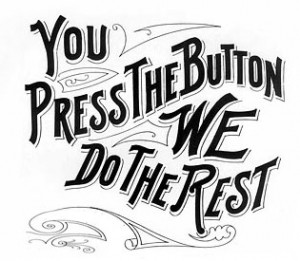Background: Frank’s still-under-warranty freezer stopped working. The service tech decided it would be repaired, ordered a new compressor and said “See you when the part gets here next week.” Frank and his wife, about to lose a freezer full of food, are not happy with the with this level of service, call “Customer Care” and are basically told that the repair will run its course.
The question posed at the end of follow-up #1 was:
“What, exactly, did the customer want here?”
I asked that question because occasionally it is good to think about not only the product we make or service we deliver, but to reflect a bit on exactly what value the customer receives from that product or service. Sometimes we confuse the technology we apply to get something done with what we are really trying to do.
Let’s look at Frank’s case. If, instead of Bellevue, Washington in July the freezer had broken down in Grand Rapids, Minnesota last December, this would not have been an issue at all. Take the food out of the freezer and set it on the porch where it was actually colder than in the freezer.
What the customer is buying is not a freezer, but an environment that keeps food from spoiling. Any environment that accomplishes that purpose will work. With our current technology, freezing the food by placing it in an insulated box with a vapor-compression heat pump attached is the best way to do that. But it isn’t the only way.
What upset Frank, and his wife, was not so much that it would take a week to fix the freezer, but that their food would spoil in the meantime. Any solution that solved that problem would have worked for them.
What, exactly, does the customer find valuable?

Sometimes the product or service simply helps the customer create, or recreate, an emotion. George Eastman “got that” and grew an empire from that idea by making photography simple enough for anyone to do. Prior to that, amateur photographers had to mess with mixing their own chemicals, glass plates, their own processing, and persevering to actually get a photograph. The value came from the technical accomplishment as much as the image itself. But that didn’t work for families that just wanted to remember an occasion, and share it with their friends. Kodak changed all of that forever. But their way wasn’t the only way, and a few years ago, a better way emerged. It wasn’t about the technology, it was about sharing the memories.
I have spent a lot of time in the construction equipment business. I recall a senior manager making a pretty insightful comment. “The only part of the crane that the customer cares about is the hook. Everything else just makes it work.”
Most construction equipment is actually is capital equipment for the customer’s business. The owner-operator of an excavator is selling a service: The customer has dirt where he wants a hole. The excavator is a tool that can fix that problem. The owner-operator needs to be able to deliver the service at a price his customer is willing to pay and still be able to make a profit. That fact, in turn, sets the prices for the equipment.
But it is important for the seller of that equipment to remember that, to his customer, it isn’t an excavator so much as a business. The seller that thinks “How can I help my customer provide better service to his customers?” rather than “I sell decent hardware at a fair price” has an opportunity to think of things beyond the hardware itself.
Look at your own operation. What value do you provide to your customers? Not just the product itself. What is the problem the customer can solve, or what is the source of pleasure he gains from your product or service? How would (or could) the customer solve the same problem, or gain the same benefit, without your product or service?
What is your customer really buying? What business are you really in?
Wow.!! This line of thinking opens up some interesting opportunities. Especially in this changing (challenging) economy.
Thank you.
This really struck me today. Love this way of thinking.
Unfortunately, this kind of thinking is not common for sales people and marketers yet. I had recently a virtual discussion with an upset lady working in financial industry, stating that “a lot of customers do not even know what they want”, so she considers marketing specialists more important for the business development. I had a similar discussion with a sales agent in IT, trying to understand what I should buy to fit my needs. So, what means value for the client? Is there any value visible for an unspecialist client in an offer full of technical terms and specific indicators (meaningful only for specialists)? Or is it only lost time for both parties?
So, the question remains: how to identify what is valuable for the client? The answer is built right in the question – it is about “the client” (pull processes), not about “clients” (push processes).